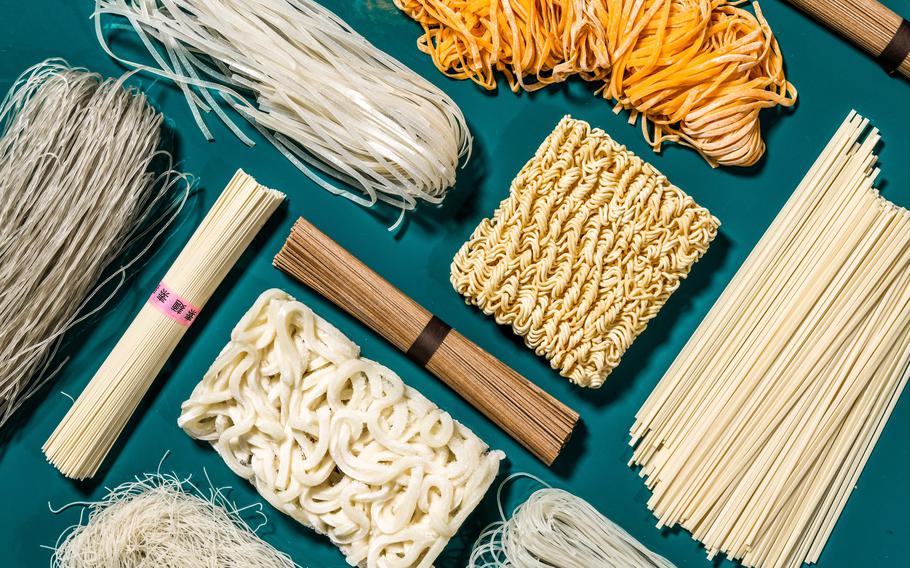Udon
 |
| Dish Cold noodle with sesame dipping sauce, duck udon with soup, kaeshi, and yakiudon |
In class we learned how to make homemade udon noodles in the as traditional as possible way. From the mixing of the dough slowly to incorporate the moisture, to the stomping on the dough with our feet. The process of making udon is a time consuming process, having to let the dough rest to enable the gluten strands to properly incorporate and make the dough elastic. This process required a lot of physical work but was worth it in the end. We made three different dishes with udon, two in which were made from our homemade udon. We made duck udon with soup, yakiudon, and cold udon with sesame dipping sauce. The idea of cold noodles was a new concept compared to western cuisine in the sense that we had to dip noodles into the sauce. These dishes were delicious and had a great flavor balance. The noodles had a good texture, but we still need to practice to make it the correct texture and size before serving to the public. I really enjoyed this day even if it did require a lot of physical work.
How to cut homemade udon
Image: Different types of Noodles
Personally, Udon has been a childhood favorite. Growing up I ate a lot of udon from a Japanese Market near my hometown called Mitsuwa. My favorite udon that I could never stray away from is the beef udon, this dish is simple but complex and has a sweet/ umami broth that is served with onions and beef. Even though it is simple the flavor in this dish it is unique. I have tried over the years to recreate the flavors in the dish but I still have not been able to get the right flavor. It was so addicting that I even contemplated working there just to obtain the recipe and end my curiosity.
In Conclusion, Udon has a unique texture and has so many varieties that I have yet to try. I have enjoyed learning on how to make homemade udon. Fresh noodles truly taste different from the frozen type. I believe that udon making takes practice and patience. I did not know on how much work went into making it homemade and now I have a greater appreciation for udon.
Rolling out of udon noodle dough
Work Cited:
"All about Udon: A Comprehensive Guide to This Japanese Noodle Dish and Its Regional Varieties:" Tsunagu Japan, https://www.tsunagujapan.com/all-about-udon-and-its-regional-varieties/.
"How Udon Noodles Became a Japanese Favorite- google Arts & Culture." Google, Google,
https://artsandculture.google.com/story/how-udon-noodles-became-a-japanese-favorite-ministry- of agriculture-forestry-and-fisheries/3gVrdIURgh7Jg?hl=en
"Japanese Udon Noodles, How to make and Different Types." Japan Centre,
httttps:www.Japancentre.com/en/pages/55udon
"Udon/soba:" Japan National Touriism Organization
https://www.japan.travel/en/ph/guide/udon/soba
Image URL : https://www.stripes.com/incoming/jfie3w-food-noodlesphoto01.jpg/alternates/LANDSCAPE_910/food-noodlesphoto01.jpg

Comments